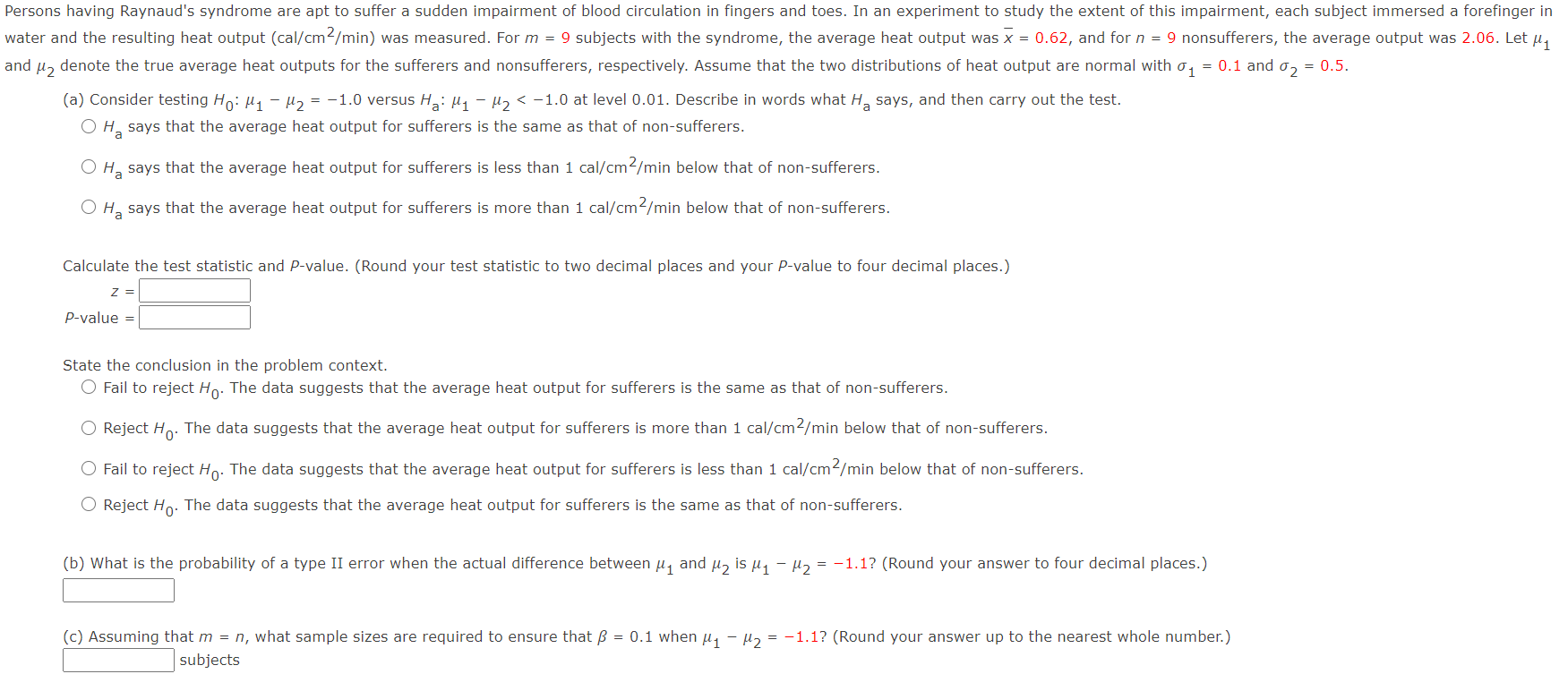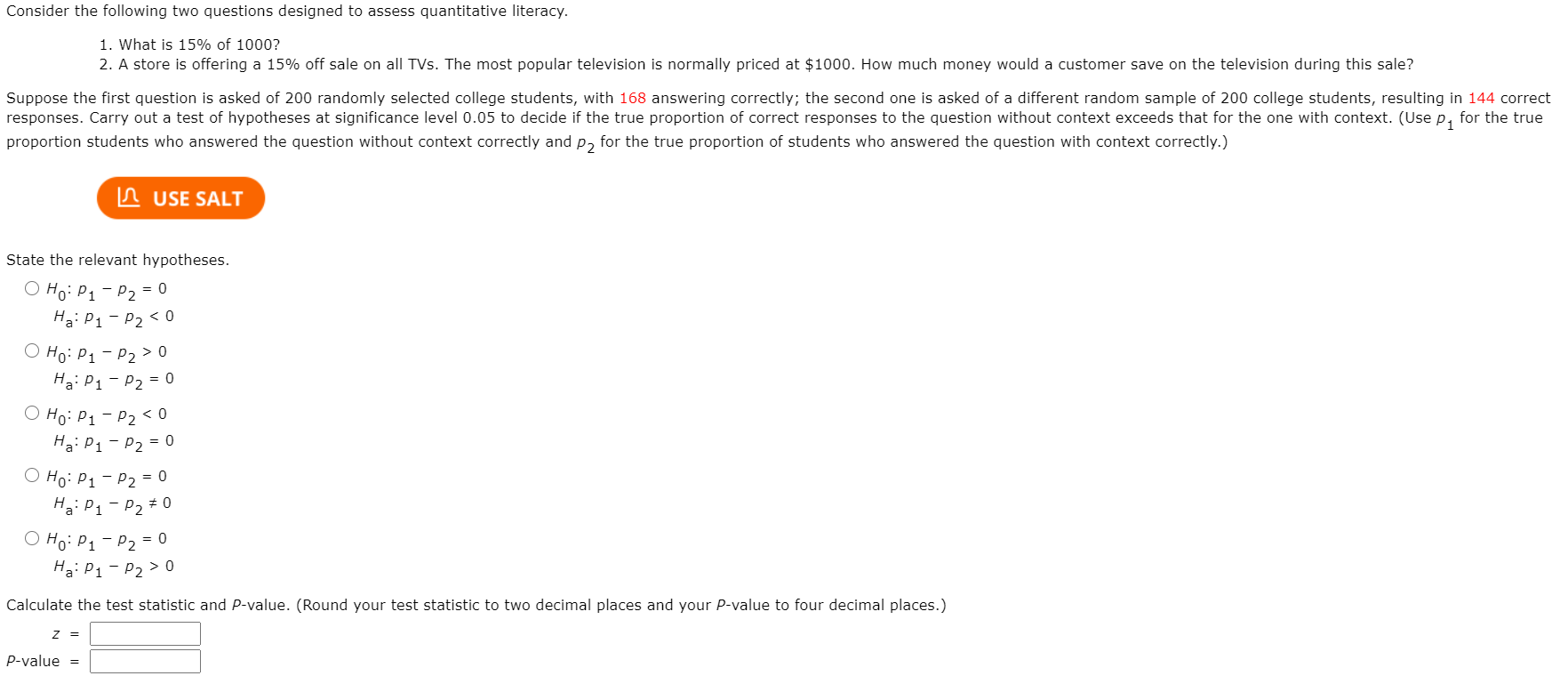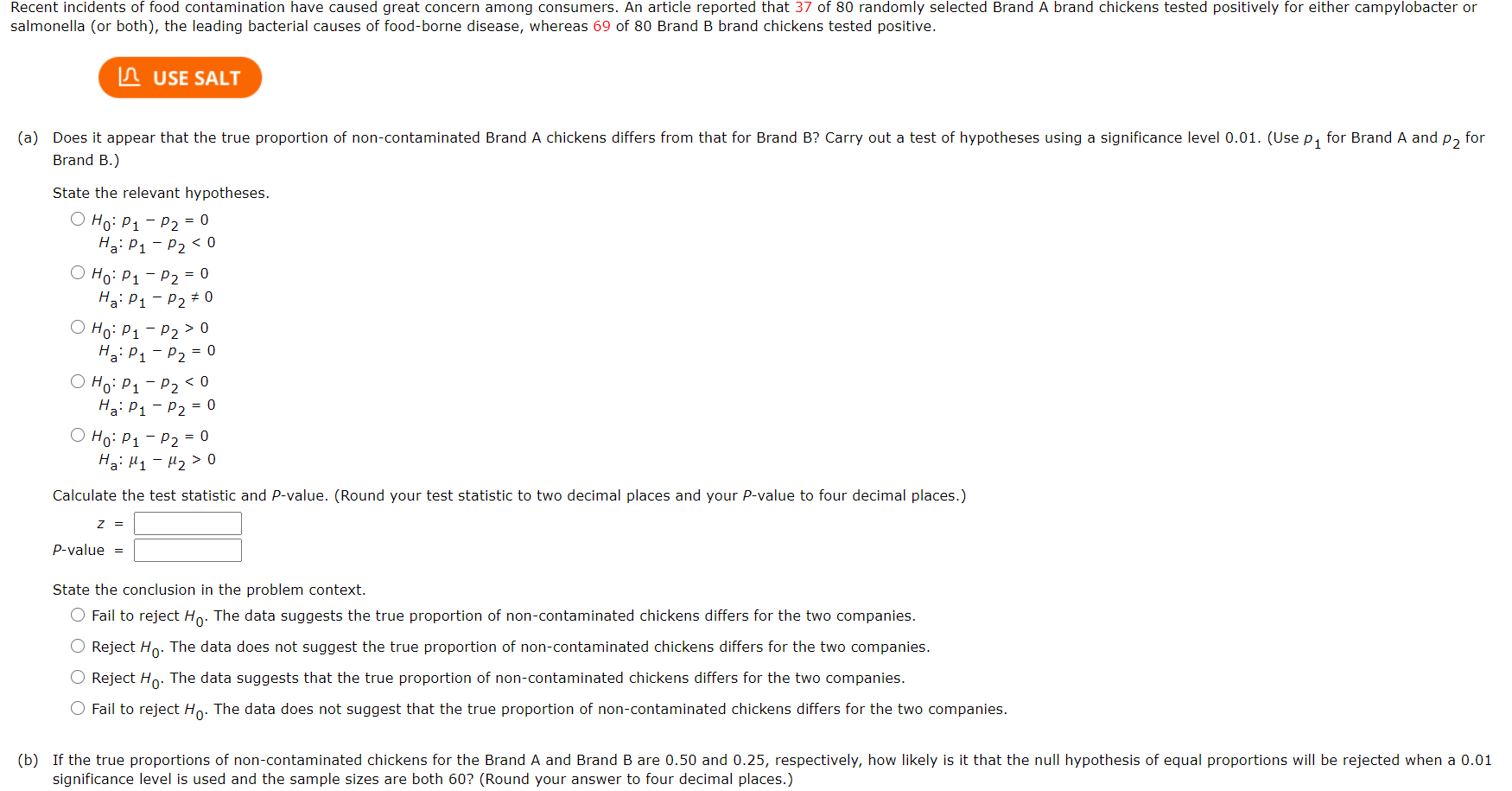


explain in detail
It is well known that a placebo, a fake medication or treatment, can sometimes have a positive effect just because patients often expect the medication or treatment to be helpful. An article gave examples of a less familiar phenomenon, the tendency for patients informed of possible side effects to actually experience those side effects. The article cited a study in which a group of patients diagnosed with benign prostatic hyperplasia is randomly d ided into two subgroups. One subgroup of size 60 received a compound of proven efcacy along with counseling that a potential side effect of the treatment is erectile dysfunction. The other subgroup of size 50 is given the same treatment without counseling. The percentage of the noicounseling subgroup that reported one or more sexual side effects is 18%, whereas 40% of the counseling subgroup reported at least one sexual side effect. State and test the appropriate hypotheses at significance level 0.05 to decide whether the nocebo effect is operating here. [Note.' The estimated expected number of "successes" in the noacounseling sample is a bit shy of 10, but not by enough to be of great concern (some sources use a less conservative cutoff of 5 rather than 10).] [ USE State the relevant hypotheses. (Use p1 for the true proportion of patients experiencing one or more sexual side effects when given no counseling and 32 for the true proportion of patients experiencing one or more sexual side effects when receiving counseling that a potential side effect of the treatment is erectile dysfunction.) 0H0:p1702=0 Ha:plip2#0 0H0:plipz:0 Ha:plip2>0 0H0:p17p2:0 Ha:plip220 OHO:p1p2:0 Ha:p17p2 0 Ha: pl 7 p2 : 0 O HO: pl 792 [1 Calculate the test statistic and P-value. (Round your test statistic to two decimal places and your P-value to four decimal places.) Recent incidents of food contamination have caused great concern among consumers. An article reported that 37 of 80 randomly selected Brand A brand chickens tested positively for either campylobacter or salmonella (or both), the leading bacterial causes of foodborne disease, whereas 69 of 80 Brand B brand chickens tested positive. USE S (a) Does it appear that the true proportion of non7contaminated Brand A chickens differs from that for Brand B? Carry out a test of hypotheses using a significance level 0.01. (Use pl for Brand A and p2 for Brand B.) State the relevant hypotheses. O HO: p1 p2 : 0 Ha: pl 7 p2 0 H3: ,01 7 p2 : D O HO: p1 p2 0 Calculate the test statistic and P7value. (Round your test statistic to two decimal places and your P7value to four decimal places.) 2 = E State the conclusion in the problem context. 0 Fail to reject H0. The data suggests the true proportion of non7contaminated chickens differs for the two companies. 0 Reject H0. The data does not suggest the true proportion of non7contaminated chickens differs for the two companies. 0 Reject H0. The data suggests that the true proportion of non7contaminated chickens differs for the two companies. 0 Fail to reject H0. The data does not suggest that the true proportion of non-contaminated chickens differs for the two companies. (b) If the true proportions of non7contaminated chickens for the Brand A and Brand B are 0.50 and 0.25, respectively, how likely is it that the null hypothesis of equal proportions will be rejected when a 0.01 significance level is used and the sample sizes are both 60? (Round your answer to four decimal places.)














